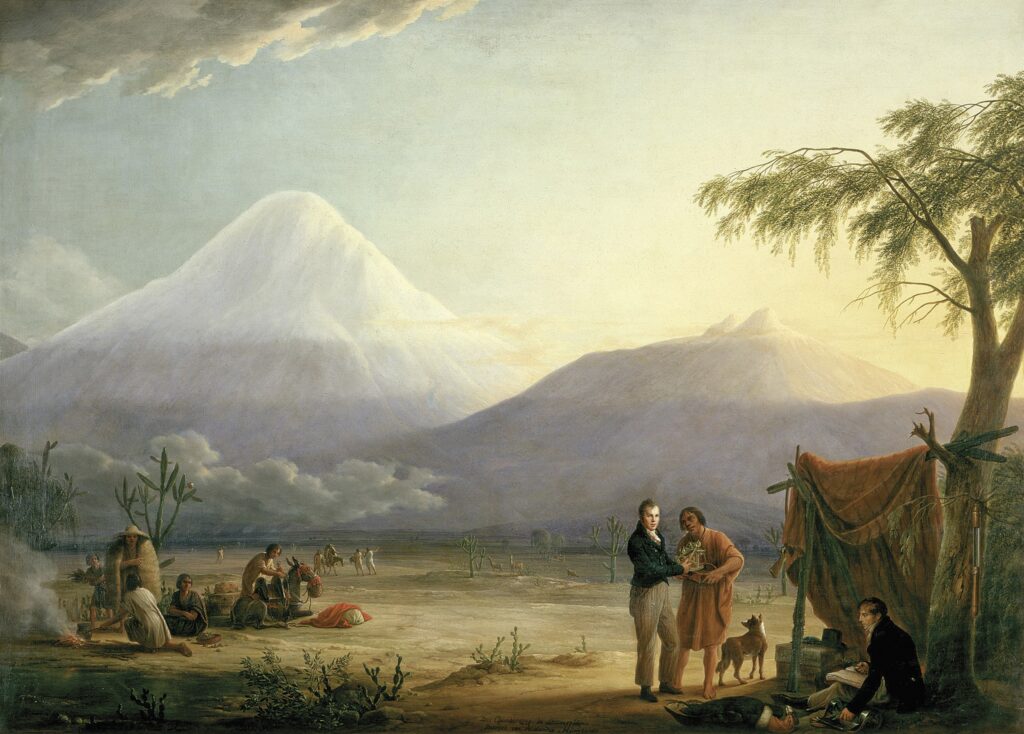
Alexander Von Humboldt and his fellow scientist Aime Bonpland near the volcano Mount Chimborazo, Ecuador shortly before they attempted to climb it. Although he didn’t reach the summit, he climbed to an altitude that was a world record for that time. This was just one of his many amazing achievements during his five-year expedition through Central and South America. Painting by Friedrich Georg Weitsch (1810
Why I Chose This Picture to Represent My Site
Alexander Von Humboldt was a revolutionary thinker. He was the first scientist that understood that nature was a vast, interconnected web of life. Unlike scientists before him, and even of his same generation, who studied phenomena in isolation, Humboldt saw how climate, geography, and all living organisms influenced one another. During his expeditions to South and Central America he saw and documented how human activity such as deforestation, irrigation, and the creation of plantations impacted natural ecosystems. He was the first scientist to recognize humanity’s role in environmental degradation and climate change. By examining data across multiple disciplines, he demonstrated that nature functioned as a unified system and thus established the foundation for modern ecological and environmental science. His visionary insights warned of the consequences of disrupting and destroying nature’s balance, foreshadowing most, if not all, of the environmental issues the world is facing today.
It’s his theory on the interconnectedness of all things that I want to extrapolate and apply to the world of human affairs. To see this phenomenon in action, we need to look no further than the impact that America’s misguided trade and economic policies are having on the world. These policies demonstrate both the strength and fragility of our interconnectedness. This is one of the areas I want to explore in my blog.